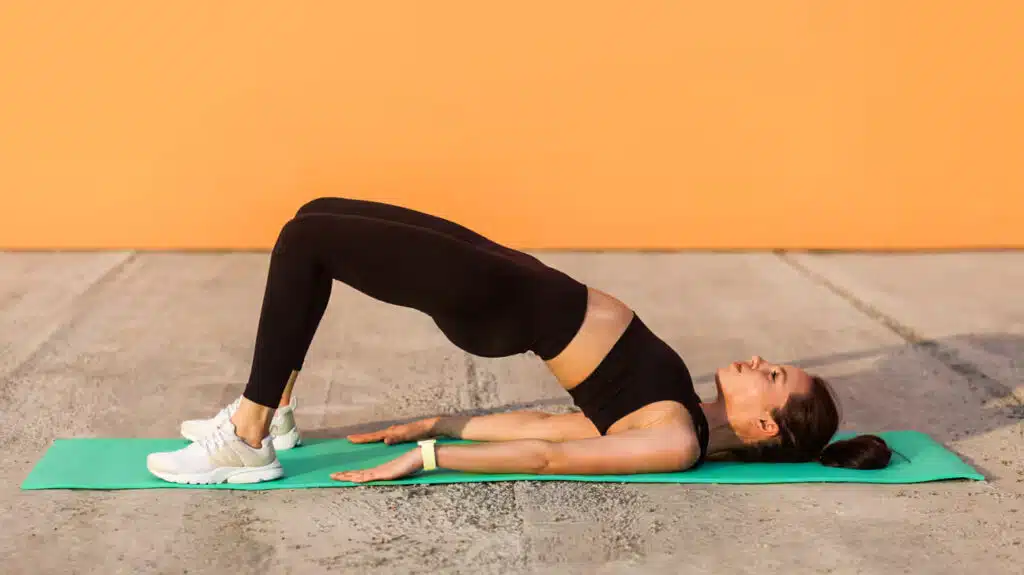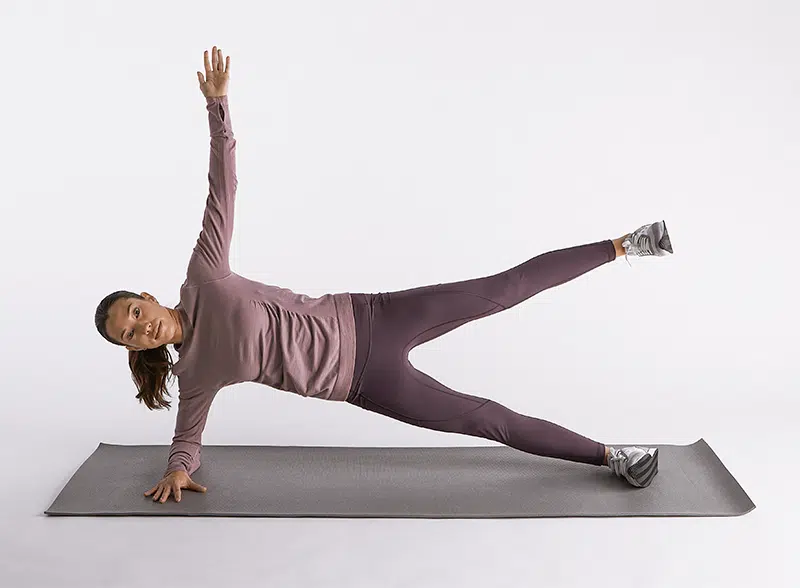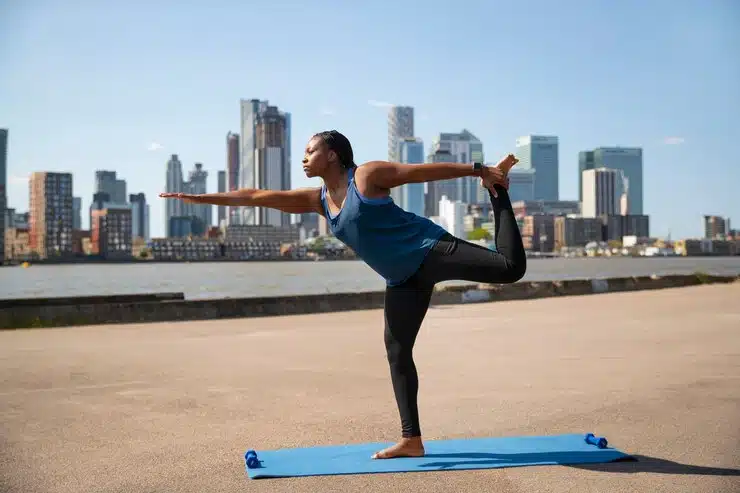Exercises : Having a strong and healthy lower back is essential for overall well-being and mobility. However, many people experience lower back pain due to various reasons such as poor posture, lack of exercise, or injury. Fortunately, there are specific exercises that can help strengthen the muscles in your lower back and alleviate pain. In this article, we’ll explore the top 10 exercises for achieving a stronger, pain-free lower back.
1. Pelvic Tilts
Pelvic tilts are a gentle exercise that can help strengthen the muscles in your lower back and abdomen. To perform pelvic tilts, lie on your back with your knees bent and feet flat on the floor. Tighten your abdominal muscles and tilt your pelvis upward, flattening your lower back against the floor. Hold this position for a few seconds, then release. Repeat 10-15 times.
2. Bridge Exercise

The bridge exercise targets the muscles in your lower back, buttocks, and thighs. Start by lying on your back with your knees bent and feet flat on the floor. Slowly lift your hips off the floor, creating a straight line from your shoulders to your knees. Hold this position for a few seconds, then lower your hips back down. Aim for 10-15 repetitions.
3. Superman Exercise
The Superman exercise strengthens the muscles in your lower back and core. Begin by lying on your stomach with your arms extended in front of you. Slowly lift your arms, chest, and legs off the floor simultaneously, creating a “flying” position. Hold this position for a few seconds, then lower back down. Repeat 10-15 times.
4. Cat-Cow Stretch
The cat-cow stretch is a gentle yoga pose that helps improve flexibility and mobility in the spine. Start on your hands and knees, with your wrists directly under your shoulders and knees under your hips. Inhale as you arch your back and lift your head and tailbone towards the ceiling (cow pose). Exhale as you round your spine, tuck your chin to your chest, and tuck your tailbone under (cat pose). Repeat for 10-15 repetitions.
5. Bird Dog Exercise
The bird dog exercise strengthens the muscles in your lower back, abdomen, and buttocks. Begin on your hands and knees, with your wrists directly under your shoulders and knees under your hips. Extend your right arm forward and your left leg back, keeping your hips square to the floor. Hold this position for a few seconds, then return to the starting position and switch sides. Aim for 10-15 repetitions on each side.
6. Side Plank

The side plank is a challenging exercise that targets the muscles in your core and lower back. Start by lying on your side with your elbow directly beneath your shoulder and your legs stacked on top of each other. Lift your hips off the floor, creating a straight line from your shoulders to your feet. Hold this position for 15-30 seconds, then switch sides and repeat.
7. Deadlifts
Deadlifts are a compound exercise that targets multiple muscle groups, including the lower back, glutes, and hamstrings. Begin by standing with your feet shoulder-width apart and a barbell in front of you. Bend at the hips and knees to lower your body towards the barbell, keeping your back flat and chest lifted. Grip the barbell with an overhand grip, slightly wider than shoulder-width apart. Engage your core and lift the barbell by straightening your hips and knees. Slowly lower the barbell back down to the starting position. Aim for 3 sets of 8-12 repetitions.
8. Hip Flexor Stretch
Tight hip flexors can contribute to lower back pain. To stretch your hip flexors, kneel on one knee with the other foot flat on the floor in front of you. Lean forward slightly, keeping your back straight, until you feel a stretch in the front of your hip. Hold this position for 20-30 seconds, then switch sides and repeat.
9. Hamstring Stretch
Tight hamstrings can also contribute to lower back pain. To stretch your hamstrings, sit on the floor with one leg extended straight in front of you and the other leg bent with the sole of your foot against your inner thigh. Lean forward from your hips, reaching towards your toes until you feel a stretch in the back of your thigh. Hold this position for 20-30 seconds, then switch sides and repeat.
10. Swimming Exercise
The swimming exercise is a dynamic movement that engages the muscles in your entire body, including your lower back. Lie on your stomach with your arms extended overhead and your legs straight. Lift your arms, chest, and legs off the floor simultaneously, and begin flutter kicking your arms and legs as if you were swimming. Continue for 30-60 seconds, focusing on keeping your core engaged and your movements controlled.
Conclusion
Incorporating these top 10 exercises into your regular workout routine can help strengthen the muscles in your lower back, improve flexibility, and alleviate pain. However, it’s essential to listen to your body and consult with a healthcare professional before starting any new exercise program, especially if you have existing lower back issues. With consistency and proper form, you can achieve a stronger, pain-free lower back and improve your overall quality of life.
Also Refer : 10 Natural Ways To Lower Your Cholesterol
FAQs
What causes lower back pain?
Lower back pain can be caused by various factors, including poor posture, muscle strain, injury, arthritis, or underlying medical conditions such as herniated discs or spinal stenosis.
Are these exercises suitable for everyone?
While these exercises are generally safe for most people, it’s essential to consult with a healthcare professional, especially if you have existing lower back issues or medical conditions. They can provide personalized recommendations based on your individual needs.
How often should I perform these exercises?
It’s recommended to perform these exercises regularly, aiming for at least 2-3 times per week for optimal results. However, listen to your body and adjust the frequency based on your comfort level and any recommendations from your healthcare provider.
Can I do these exercises if I’m currently experiencing lower back pain?
In some cases, these exercises can help alleviate lower back pain by strengthening the muscles and improving flexibility. However, it’s crucial to start slowly and gently, avoiding any movements that worsen your pain. If you experience significant discomfort, stop the exercise and consult with a healthcare professional.
How long does it take to see results from these exercises?
Results may vary depending on individual factors such as consistency, proper form, and overall health. With regular practice and adherence to a healthy lifestyle, you may begin to notice improvements in strength, flexibility, and reduced lower back pain within a few weeks to a few months.
Image Source : Freepik





